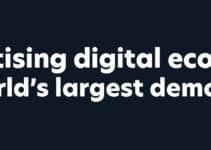Michael Sindicich
Contributor
Michael Sindicich is the EVP and general manager of expense at Navan, an all-in-one travel and expense management solution.
The 2008 Global Financial Crisis was easily the most destructive economic crisis since the Great Depression. And yet, it’s not without a touch of irony that without it, we wouldn’t have a thriving startup ecosystem.
In an attempt to reboot the global economy, central banks slashed interest rates to almost zero, resulting in an era of cheap money.
This resulted in two things. First, it incentivized investors to fund promising (and, in many cases, not so promising) young tech companies. But it also allowed for the emergence of business models that, in any other circumstance, would be completely unviable.
For examples of the latter, you only need to look at the fintech world. Over the past decade, a dizzying array of challenger banks, e-money services, digital wallets, and more have managed to claw market share away from the legacy incumbents.
They accomplished this by offering a product that, from the consumer’s perspective, was undoubtedly superior.
Consumers were easily convinced by these slick apps, low or nonexistent fees, and higher rebates or interest rates. But they didn’t think about whether the business fundamentals of these fintechs were sustainable in the long-term or whether they could weather a broader change in macroeconomic conditions. They didn’t need to.
But now fintech faces a reckoning. Over the past two years, central banks have hiked interest rates from their COVID-era lows to the highest levels for a generation. And now the business models that won consumers’ affection look increasingly tenuous.
It’s only a matter of time until the house of cards collapses.
Fintech’s Achilles’ heel
For countless fintech providers, the main source of revenue comes from interchange fees. These are, essentially, the commissions paid to card issuers, payment networks, and banks whenever a consumer buys something.
Many fintech companies rely on interchange fees to varying degrees, although in each case, they account for a significant part of their income. For example, U.S. neobank Chime made $600 million from interchange fees in 2020 alone. From the consumer’s perspective, the interchange is completely invisible, although for many fintechs, it’s a financial lifeline.
Ultimately, fintechs need to remember that they are, first and foremost, technology companies.
There are two things you need to know here: First, although interchange fees vary depending on the type of card, such as whether it’s a debit or credit card, and the jurisdiction where the payment occurred, they nonetheless are capped to a fixed percentage of the transaction price.
The other thing? Interest rates, by their very definition, aren’t. They’re set by central banks, with the percentage rate influenced primarily by external economic conditions. When times are tough — like a recession or a once-in-a-lifetime pandemic — they go down to stimulate spending and bolster consumer confidence. When inflation spikes, so too do the interest rates as central banks try to dampen economic activity (and thus, demand).
By itself, this presents a serious dilemma for fintechs wholly or primarily reliant on interchange fees. While their revenue potential is capped as a fixed percentage of their customers’ purchasing activity, their borrowing costs can spiral dangerously out of control.
This issue is compounded further by the fact that, in many cases, these fintechs aren’t keeping the interchange fees for themselves. As we’ve seen over the past decade, one of the most valuable barometers of a startup’s future prospects is its customer acquisition rate, and the easiest way to juice this metric is to offer generous rebates or interest rates.
And so, to keep the lights on, they’re burning through their runway or looking for funding through equity or debt deals. But runway doesn’t last forever, and as the broader macroeconomic situation worsens, additional funding has become harder to obtain, and likely is smaller or given under less advantageous conditions.
A lack of flexibility
It’s worth noting that this crisis is one shared almost exclusively by the newest fintech startups, and not, as you perhaps might expect, legacy financial institutions. One reason — albeit a small one — is that these businesses don’t have the same pressing need to acquire new customers. A bank with a hundred-year legacy doesn’t have to rely on sign-ups to prove its long-term viability as a business.
But the biggest advantage these incumbents enjoy is the fact that they’re, as businesses, incredibly diversified. Time has allowed them to offer a broad range of services, from loans and insurance to credit cards and mortgages. This diversification offers a degree of insulation from interest rate changes and is why the notoriously stodgy traditional financial sector will weather the coming few years.
Additionally, banks have traditionally enjoyed the cheapest forms of funding, because they store and hold deposits, often paying interest rates to their customers that are far below those established by central banks.
By contrast, most of the challenger fintech startups lack that extent of product diversity. They may be exclusively reliant on interchange fees for revenue or, if they have alternative products, are yet to achieve any level of critical mass or adoption. Often, this is because they’ve yet to become registered and regulated banks, or they’ve willingly chosen to focus on one particular segment of the market.
In the U.S., banks are the only institutions that can hold depositor funds. They have more freedom in the types of products they can offer and thus have greater opportunities for diversification. But the formal process of becoming a bank is long, tiresome, and expensive — and it’s only getting harder. For fintechs, it simply isn’t worth the effort — or, rather, it’s a problem to circumvent by partnering with a fintech-friendly bank.
Becoming a bank also carries some serious downsides. It involves a high degree of oversight, which many startups may find too difficult to bear. And what happens if a fintech changes its mind? Then things get tricky.
Renouncing a banking charter is a logistical nightmare and carries a degree of stigma, as it’s often the result of some kind of failure or malfeasance. That’s not to say it doesn’t happen or that there aren’t legitimate (and even strategically sound) reasons for doing so. The Utah-based Marlin Bank gave up its state charter to merge with a larger investment fund. But these divorces — for lack of a better term — are never easy. There’s the thorny issue of what to do with client accounts or the products you can no longer sell or manage. The transition takes time, effort, and money.
The difficult road ahead
The original sin of many startups — including, but not limited to, fintech companies — is believing that the rosy macroeconomic conditions of the 2010s would continue indefinitely. That inflation and interest rates would stay low forever and that they’ll never run short of affordable, easily accessible capital.
That there would be no pandemic. No war in Ukraine. Nothing that could shake the foundations of their businesses.
For many companies, this myopia will be their downfall. They’ve boxed themselves in, either by offering a limited product lineup or by providing incentives that their customers will be reluctant to abandon. This is especially true for those businesses in the corporate card market that depend primarily on interchange fees but give most or all of their revenue to customers in the form of rebates and interest rates.
This fear is shared by McKinsey, which, in its 2022 Global Payments Report, warned about the impact of rising interest rates and fixed interchange fees on fintechs, noting that the business models of many fintech startups — particularly for buy now, pay later firms — have yet to prove their viability in such choppy macroeconomic conditions.
One thing is clear: The stubbornly high rates of inflation aren’t, as once thought, a transitory problem but something that will be with us for a long time. This means we’re unlikely to see low central bank rates — the secret sauce that allowed these fundamentally precarious business models to last so long — for several years to come. The fintechs that survive this period will be those who adapt, either by making hard decisions about the incentives they offer customers or by expanding their product portfolio.
They can accomplish this without fundamentally undermining their value propositions. As some of the most successful fintech companies prove, the best way to drive volume is to offer a customer experience that’s unambiguously better than the legacy alternatives.
Ultimately, fintechs need to remember that they are, first and foremost, technology companies. And the way to win is to build incredible software.
Great software gives consumers a reason to pay rather than use a free alternative. It unlocks new revenue models beyond relying on interchange fees or other commission-based payments. By thinking about your business as one that tries to identify and solve problems, rather than one centered on customer acquisition and transaction volumes, it becomes vastly simpler to identify new opportunities, be they new features to distinguish your business from the competition or new products that you can upsell to existing customers.
Crucially, by treating software as a first-class citizen, fintechs can license their software to other organizations, unlocking an additional revenue stream. If the biggest threat to existing fintech companies is an overreliance on interchange fees, the easiest way to achieve resilience is by aggressively pursuing diversification.
This isn’t an inherently novel concept. Look at Microsoft, which makes money from a variety of sources — operating systems, office software, cloud computing, games consoles, and laptops. The same could be said for Google, Apple, Amazon, and countless others. Although the highly regulated nature of the financial services sector makes expansion a complicated and often-bureaucratic process, it’s by no means impossible.
Obviously, it takes time to build new features and unlock additional revenue models. Great software — truly great software — takes talent, money, and a roadmap that stretches beyond a single quarter. For many organizations, achieving this sustainability is a long-term ambition. But it’s worth remembering that we’re still in a tough macroeconomic environment, and profitability is no longer a dirty word for investors — or, at the very least, something that’s secondary to growth.
Showing you’re serious about long-term sustainability and have a pathway to profitability will hold you in good stead in your next funding round.
And finally, they should consider whether the incentives they offer still make sense, given the turmoil we’ve seen in the financial services sector. This year isn’t yet over, and we’ve already witnessed three major bank failures and the collapse or acquisition of countless other smaller providers. Given the ongoing consternation, stability — and, most importantly, the ability to project an image of stability — can be a useful marketing tool.


